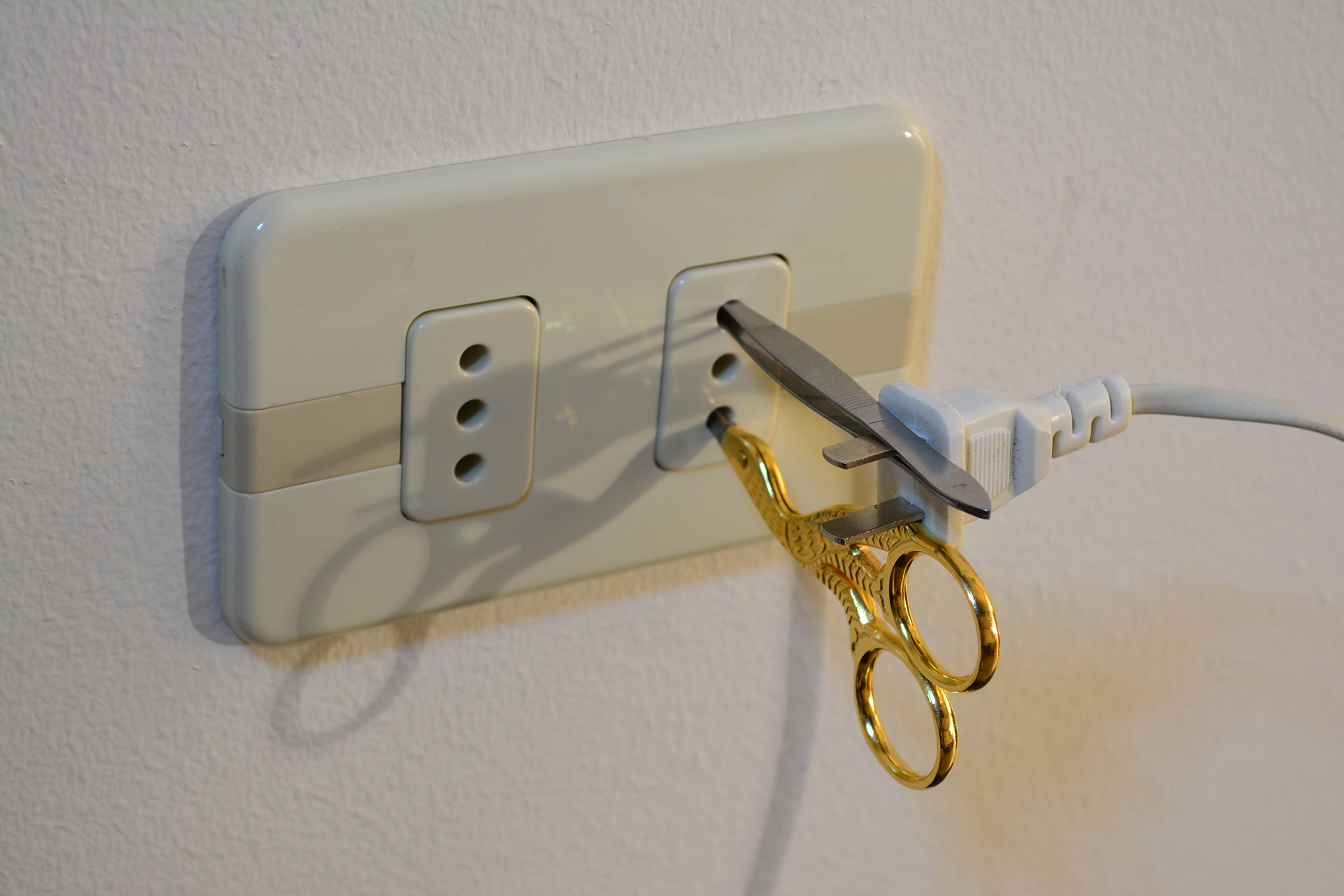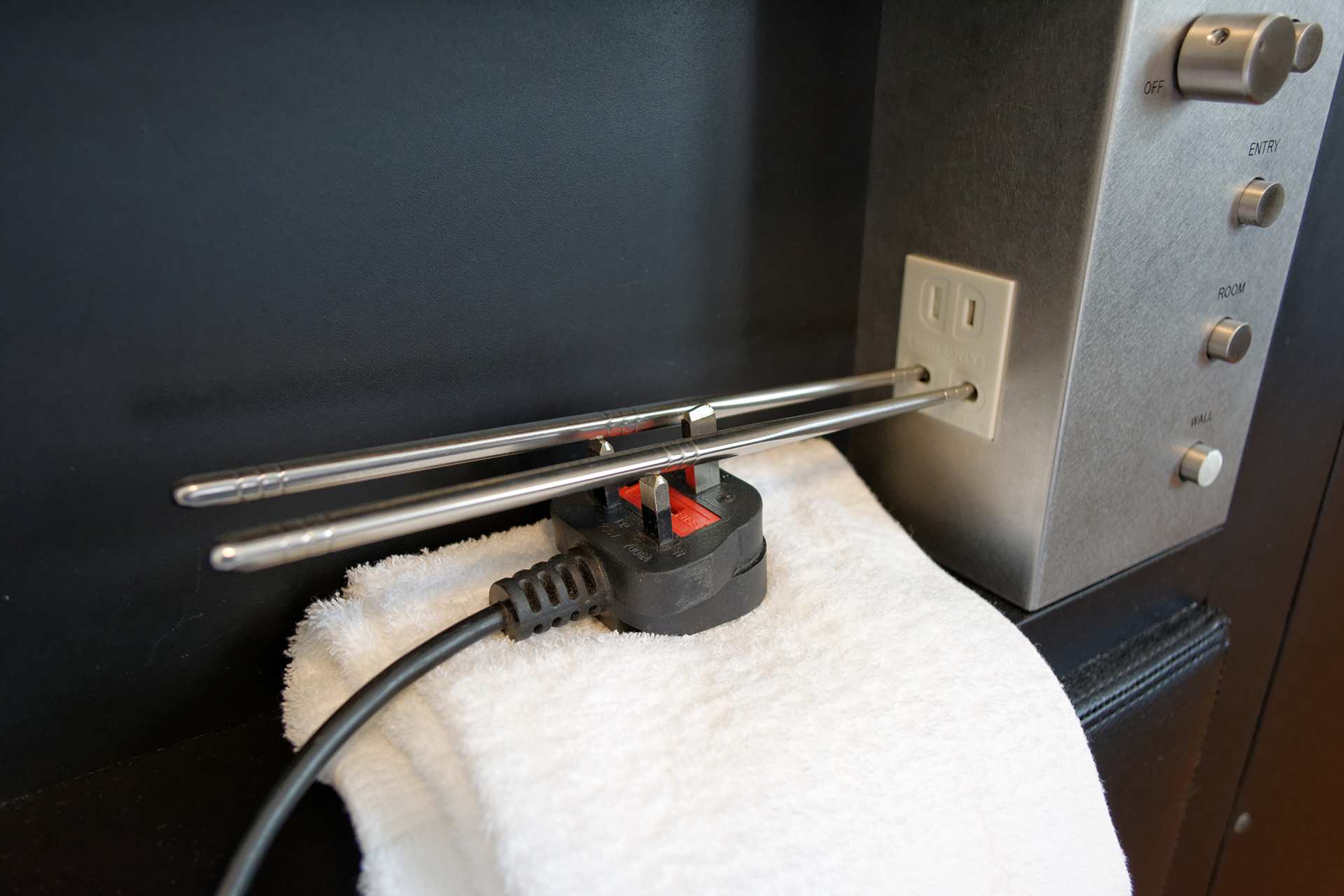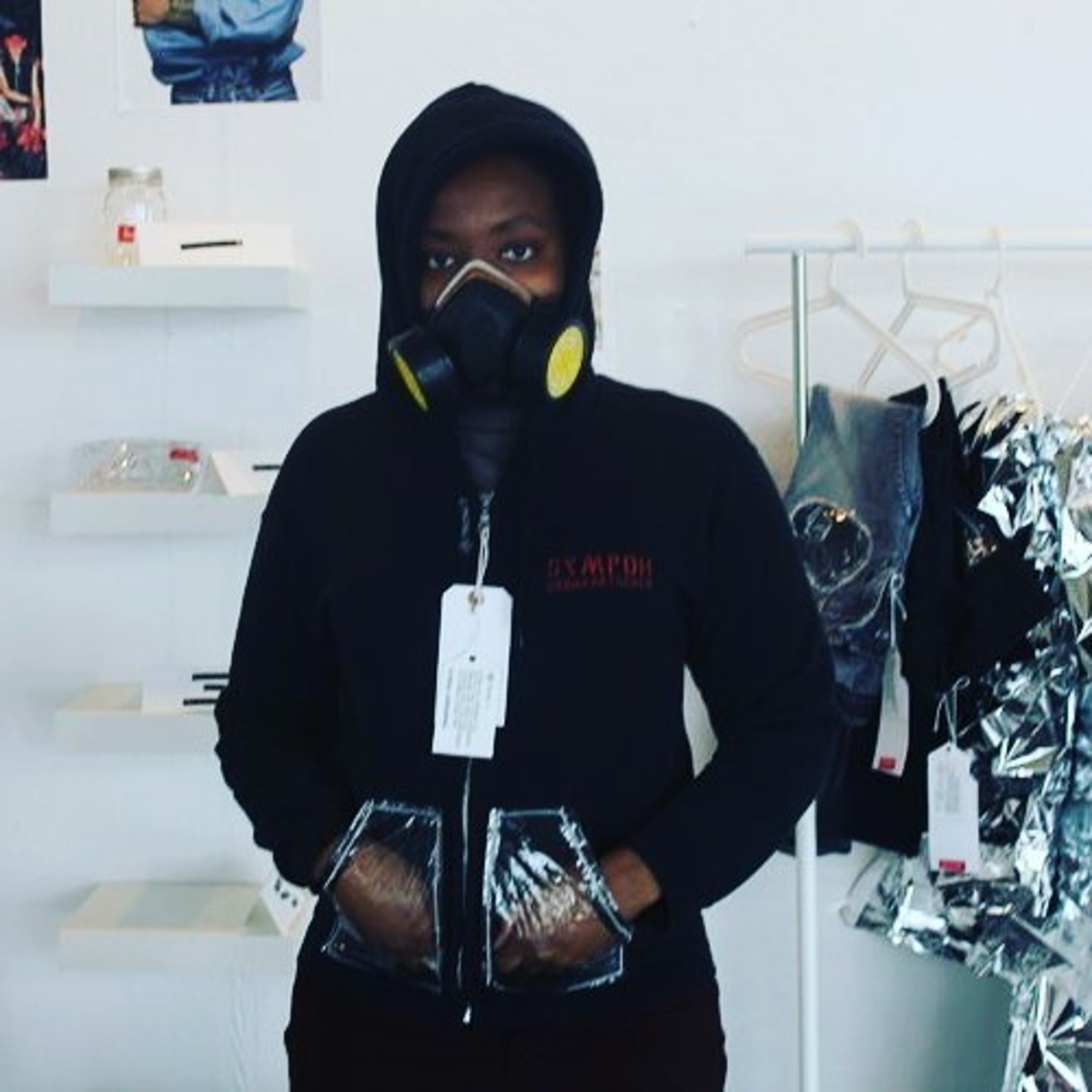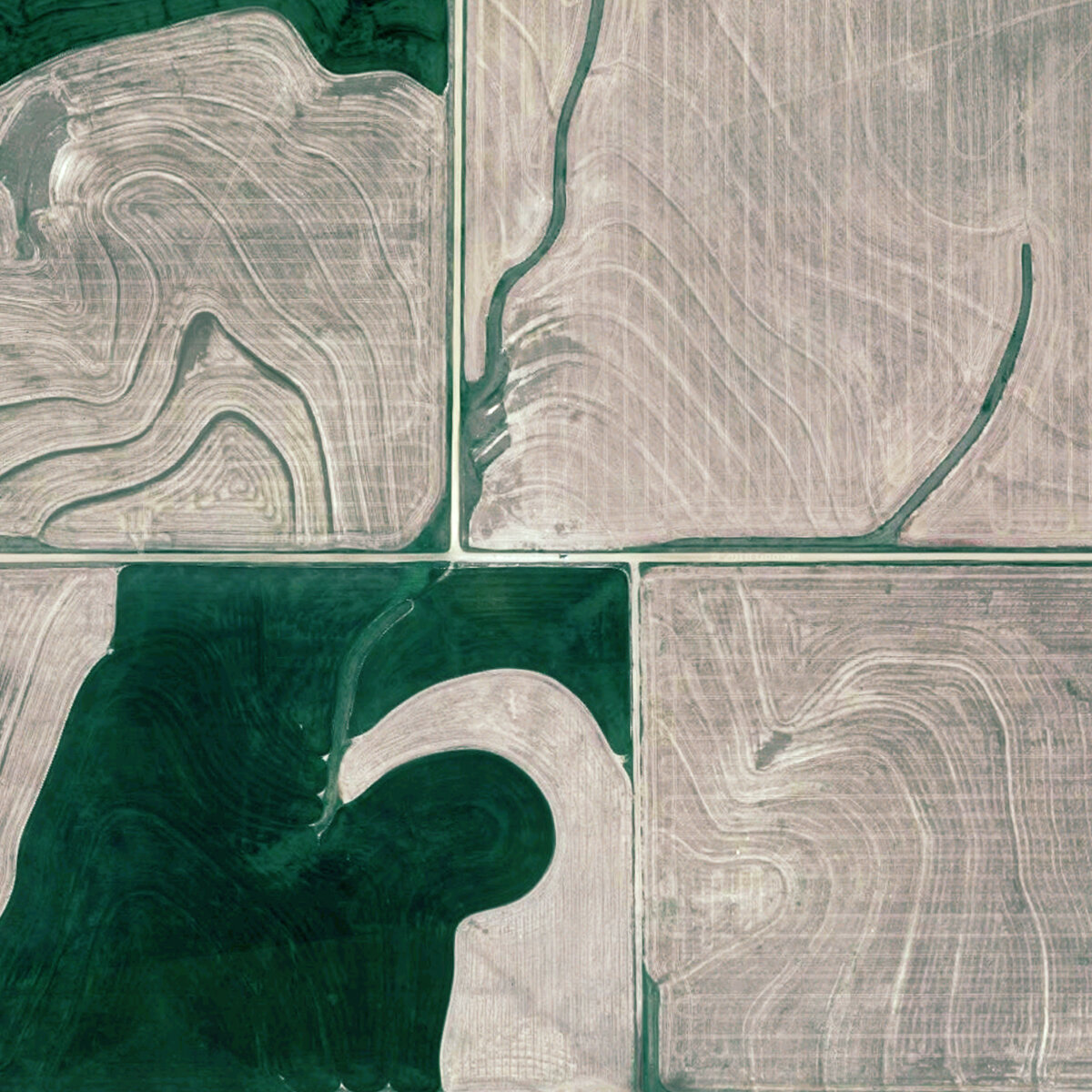Travel Companions

Jon Sasaki’s Improvised Travel Adapters
Text by Gustavo Artigas
In an architectural plan or in a sculptural project, it is necessary to consider potential risks. Both must abide by regulations and laws to exists as realities. Electricity necessitates particular attention to the balance between risk and reward when it’s introduced to a building or a work of art. We don’t see its lines of energy but they surround us all the time, canalized and insulated. Yet an electrified space holds the power of life and death. Defibrillators, distributed through large buildings and public spaces, take advantage of a building’s electrical energy for resuscitation purposes, causing changes in the chemical elements of the body to help a person survive an episode of cardiac arrest. But in most cases the consequence of direct contact between human bodies and electrical energy is not healing but its opposite. The list of possible injuries to the human body as a result of an electrical charge range from muscle spasms and minor burns, to broken bones, nerve damage, and death.
I think about this when I see Jon Sasaki’s photographs of interventions involving electrical outlets. It occurs to me that human beings have an easy curiosity towards these devices. It is common to see a baby quickly approach an outlet (it’s the same with stairs, knives, and other dangerous things), a phenomenon that leads me to the visceral conclusion that a part of our curiosity is undoubtedly a natural desire to put ourselves at risk. Most of the time, we take electrical energy for granted, but when trying to repair an appliance or when traveling abroad and trying to connect a device to a type of outlet different from the ones we find at home, we are reminded that it’s hazardous.
Everyday electrical objects, the ones that we take with us everywhere, become a burden when we travel. Different countries mean different outlets and sometimes even different currents. Countries or regions that have developed a particular type of plug to connect to electrical outlets have different arguments to justify their choice: security, stability, weight, and even the history of armed conflicts in the world. For example, despite the quality of German electronics, they were unpopular after the Second World War for reasons that had nothing to do with their high standards. Similar things can be said of the former USSR or about adapters or multiple electric eliminators made in China. We could say that the planet is divided not only into time zones but current zones.
The borders of the world—the agreements on where a country starts and where another ends—are arbitrary. We could walk the world and cross seas and rivers and we would not find substantial differences in the landscape on one side of a boundary between nations and the landscape on the other. The different electrical platforms that divide the world is a palpable kind of difference, beyond the convention or fiction of a social agreement. The ephemeral constructions in Sasaki’s photographs allow us to appreciate that there is a solution to this incompatibility. In each image there is something that does not coincide: the plugs of the appliances do not correspond to the outlets, so the artist uses metal objects to close the circuit despite the obvious risk of this action. Sasaki uses his wit to hack the converter; there is a limit and creativity provides the means to overcome the limitation. And there is risk involved in these endeavours—Sasaki puts himself on the line. The body (the artist´s body) that performed these extreme actions is not in the picture, and its absence heats up the tension around the question, How was this done?
Sasaki looks at the challenge of making something come together despite its design as an adventure. He approaches energy transmission the way that Peter Fischli and David Weiss used a single shot to register the actions and reactions of objects falling and spinning and hitting one another in a long chain reaction, captured in their film Der Lauf der Dinge (The Way Things Go). Like Jason Rhoades´s massive installations, but on a more intimate scale, in Sasaki’s photographs, systems of objects resemble a kind of anatomy. Like Erwin Wurm´s One Minute Sculptures, they involve simple elements or props that people interact with only briefly. Simple actions like those of the Belgian artist Francis Alÿs, like the action Sometimes MakingSomething Leads to Nothing, in which the artist pushes a block of ice for hours until it disappears completely.
Focusing on interventions that are so small and so risky helps stabilize the inevitable instability of a displacement. What does it mean to integrate ourselves into different external situations in our own ways? For an artist, a change of context can provide significant material to work with and hints about new paths to follow. Crossing a border between systems leaves the artist to find a way of closing the circuit—a specific, local frame of mind to solve problems in a way that will generate different perspectives.
In a world that is at once both globalized and fractured by extremism, the experience of traveling or moving exacerbates our sense of discomfort and instability. Faced with basic differences—unfamiliar social codes, an electrical outlet that doesn’t fit—a traveler can feel impotent, disconnected, incapable of communicating. Sasaki’s interventions are small achievements that address these feelings of being cut off and far from home. Their riskiness reveals the danger hiding in the walls, the objects they involve managing that risk with wit and humour. The viewer feels the wrongness of things stuck where they shouldn’t go, and a sense of justice in the results: it’s the feeling of evening the score. Like a kind of road movie, Sasaki’s photos are travel works. They find the fractures (of systems, borders, and language) that follow us from one place to another; they mirror our discomfort and reveal the limits we can’t control, and invite us to crack a smile in a free and open way.
Bio
Jon Sasaki is a Toronto-based multidisciplinary artist whose practice brings performance, video, object, and installation into a framework where expectation and outcome rarely align. Often charting territory between logic and absurdity, his work employs ad hoc problem solving and inefficiencies in thought experiments that search for useful models. Sasaki holds a BFA from Mount Allison University (Sackville, NB) and is represented by Clint Roenisch Gallery in Toronto. http://www.jonsasaki.com/
Gustavo Artigas’s work has been included in the Venice Biennale, Havana, Liverpool, Argentina, Ekaterinburg and Prague. Best known for work that experiments with unconventional structures, his most recent explorations employ colour, light, and abstract painting as well as photograph and sculpture to tackle social interactions in unpredictable times. Born in Mexico City, Artigas is currently based in Toronto where he directs ART LINKS INC. www.gustavoartigas.com



















